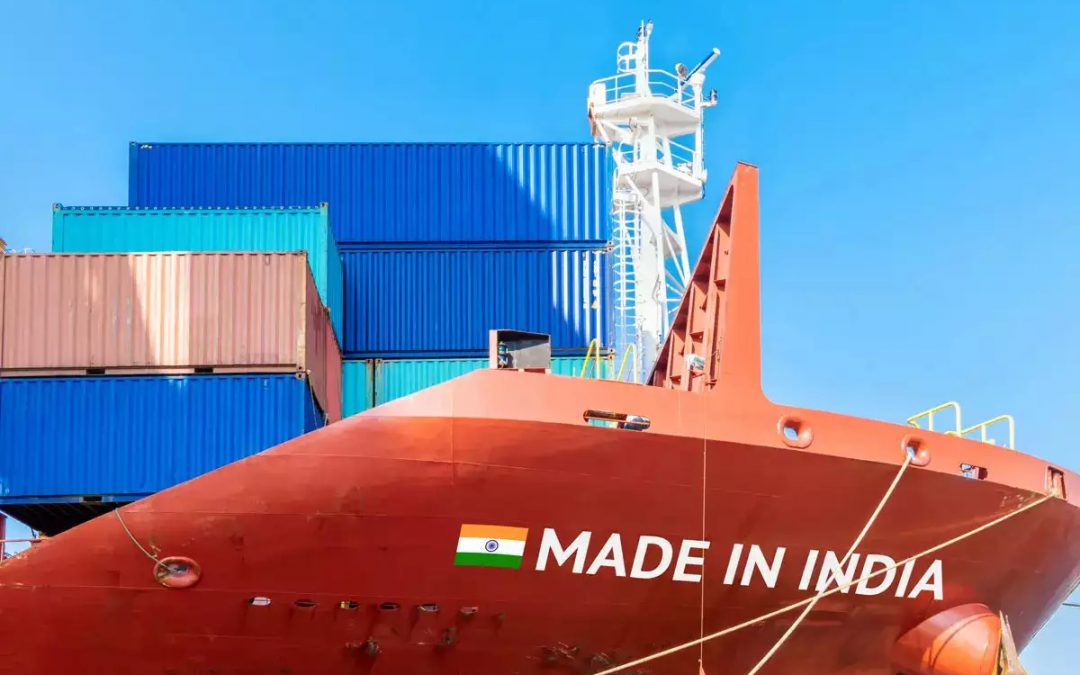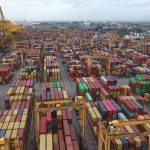To cut down its dependence on China, the Modi government is working on a comprehensive plan for manufacture of shipping grade containers in India that includes giving Production Link Incentives (PLI) to indigenous firms, ThePrint has learnt.
There was a huge shortage of shipping grade containers globally during the Covid-19 pandemic. The shortage had resulted in shipping lines increasing container freight rates phenomenally across the world, which badly impacted India’s export import supply chain.
Presently, only a few small domestic firms manufacture containers that provide service on the rail mode, but the number is minuscule. The Container Corporation of India Limited (CONCOR), a public sector undertaking (PSU) under the Ministry of Railways, is India’s largest container fleet operator with 37,000 containers. But the entire fleet catering to the domestic segment is imported from China, which has a monopoly in the sector.
For the domestic segment alone, CONCOR has a requirement of around 50,000 containers in the next three years.
CONCOR, which had last year placed orders to manufacture 8,000 containers from domestic companies, has now placed a second order for another 10,000 containers from a Bhavnagar-based firm.
To study the problem and chalk out a plan to create capacity for manufacturing shipping grade containers in India, an inter-ministerial panel set up on the directions of the Prime Minister’s Office in June has now recommended a slew of measures, including giving PLIs to indigenous firms to manufacture containers.
“The draft PLI is ready and is in the process of being circulated for inter-ministerial consultations,” a senior government official, who did not want to be named, told ThePrint.
The inter-ministerial committee — which includes officials from the ministries of shipping, steel and commerce, as well as representatives from CONCOR and the National Industrial Corridor Development Corporation (NICDC) — also looked into issues like availability of specified quality of steel needed for manufacturing containers, ramping up panels for inspection and agencies to certify containers manufactured in the country.
The committee’s recommendations and action taken by respective agencies so far was reviewed by Railways Minister Ashwini Vaishnaw, Shipping Minister Sarbananda Sonowal, and Health Minister Mansukh Mandaviya on 15 August.
During interactions with industry stakeholders, the committee was told that a specific kind of steel is used for making containers but there are no Indian standards available for the same at present.
“You need the specified Corten-A steel for manufacturing containers. The committee took up the matter with the Bureau of Indian Standards (BIS), which has now issued an Indian standard, which is equivalent to Corten-A steel specifications,” an official, who was part of the committee, told ThePrint.
The steel ministry is also talking to steel manufacturers to get themselves registered with BIS and obtain a license to roll steel according to the standards specified. Similarly, on the direction of the committee, the director general (shipping) has increased the panel of inspecting and certifying agencies from two to six.
These agencies certify containers according to the ISO standard test.
Long road to becoming container hub, say industry experts
While India has set the ball rolling for mass manufacturing of shipping grade containers of required international quality at reasonable rates, industry experts feel India has a long way to go before it becomes an export hub for such containers.
The experts said that government support in the form of PLIs is a must if India wants to ramp up container manufacturing, but that is not all. The government should think about having its own shipping line to complete the integration of the logistics chain.
Naresh Kumar, director, Kalyani Cast Tech Pvt. Limited, a container manufacturing firm, said that today, containers are owned by either shipping lines or big leasing companies. “There are no shipping lines in India. Only a minuscule number of containers are owned by India, and 98.99% containers in India are manufactured in China. This is an area where India should contribute considering our exports are growing.”
Kumar further said that if India wants to become a container hub, it has to cater to the exim (export-import) market, and the domestic market is fragile.
Dr A Sakthivel, president, Federation of Indian Export Organisation, concurs. “Shipping lines will always be in demand because we have to export as well as import. Once we have our own shipping line, the demand for containers will come automatically. The government should encourage private companies to come forward and set up shipping lines as well as take up container manufacturing,” he told ThePrint.
Shailesh Garg, director at Drewry Shipping Consultants Limited, said that India has to see how the global market operates: “Currently, it is very much a monopoly and getting into it is a challenge. We can probably try to break it by cutting down the prices.”
“The problem is that we are on the higher side of the cost and if we have to become competitive, then how much subsidy we can give, are steel companies in India going to increase the supply of the required steel? What subsidies and incentives is the government giving and third, if we manufacture 1,000-5,000 containers per year, then how are we going to compete on economies of scale?” he said.
Garg further said that India started thinking about it (manufacturing containers) as a reaction to the container shortage faced during the pandemic. “But if we do not do it the right way then it could again die down like it has in the past. Ramping up container manufacturing is fine but India should also think about supporting and promoting its own container fleet,” he added.
Prior to 2020, shipping lines, Garg continued, were under financial stress and faced sluggish demand, and this led to limited investment in their container inventory. “The two to three container manufacturing companies in China were operating at 50-60 per cent of their capacity because of low demand from the shipping lines. So, the inventory was also limited to take care of the sudden surge in demand seen in the second half of 2020 coupled with supply chain bottlenecks. This led to a shortage of containers in the key markets and impacted the entire container supply chain.”
But in the last two years, shipping lines and leasing companies have placed more orders for building their inventory, and more containers have been built. ”Further, easing of supply chain constraints has also helped. Now the overall situation has shown improvement,” he said.
Chinese container manufacturing companies are also operating at full capacity plus shipping lines may slow limiting new ordering in view of the expected slowdown in global trade, the Drewry director explained. “So the question is who will buy these containers if India manufactures them? Therefore, we need to take a more holistic view if we want to seriously promote container manufacturing and compete at a global level.”
Kumar, quoted earlier, said that if India has to compete with China, the government will have to give PLI like China is giving. “Our rates are high compared to China. The Chinese government is giving 15 per cent PLI to container manufacturers. India will also have to create the right ecosystem for the private sector to come in. Unless our rates are competitive, why will anyone come to us to buy containers?”
“Container manufacturing is a 9-10 billion dollar industry. India should target at least 9 to 10 per cent share initially,” he added.
Source: The Print






